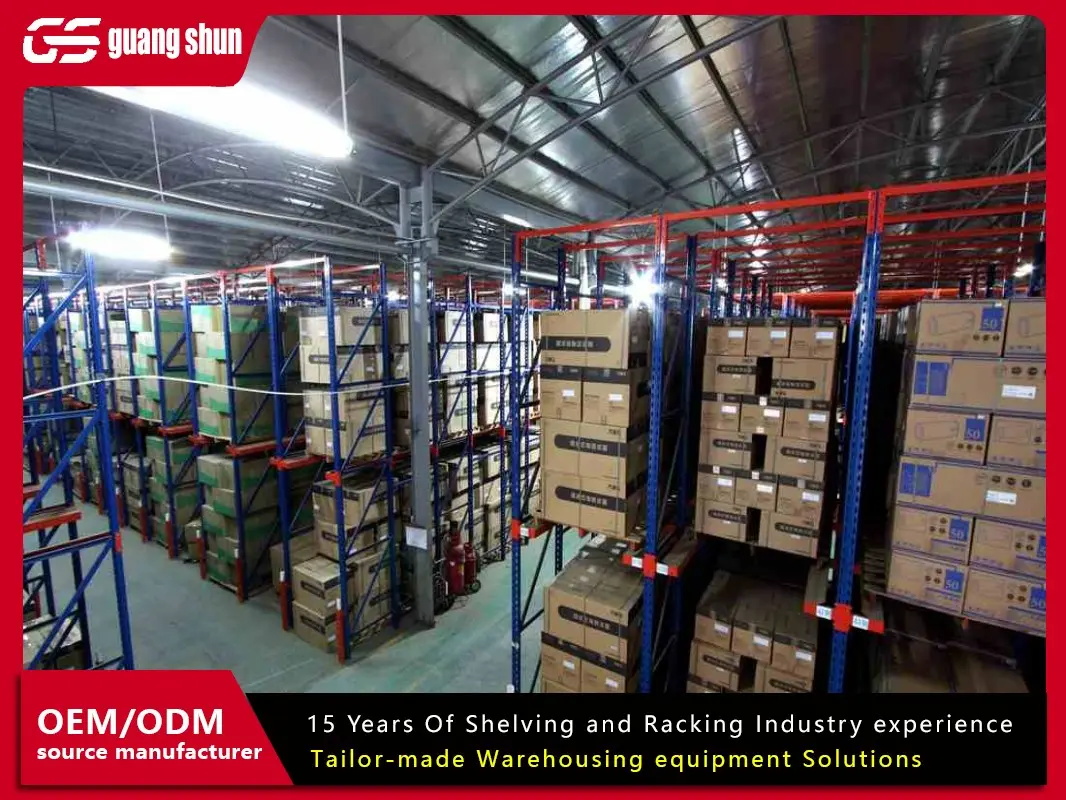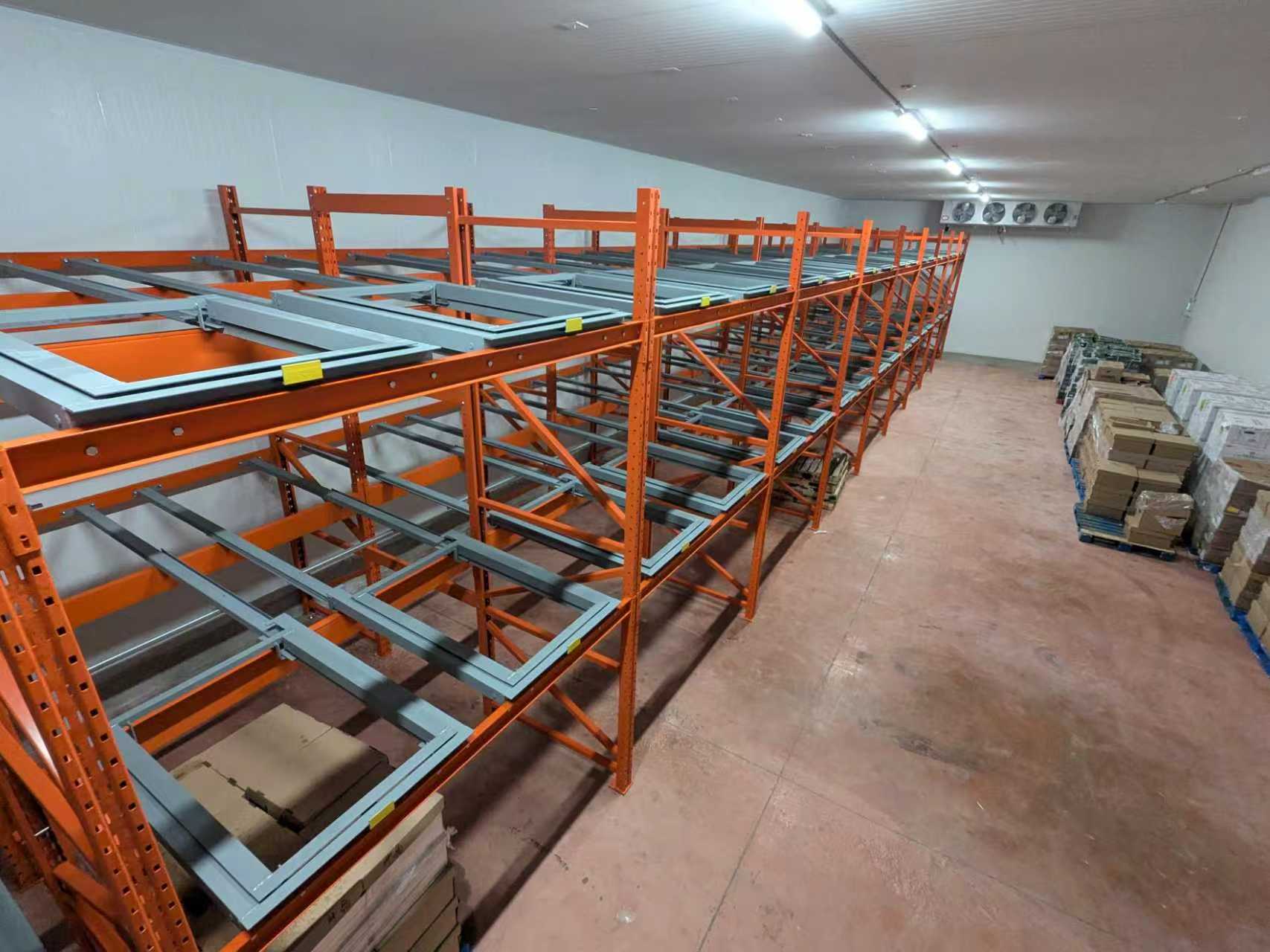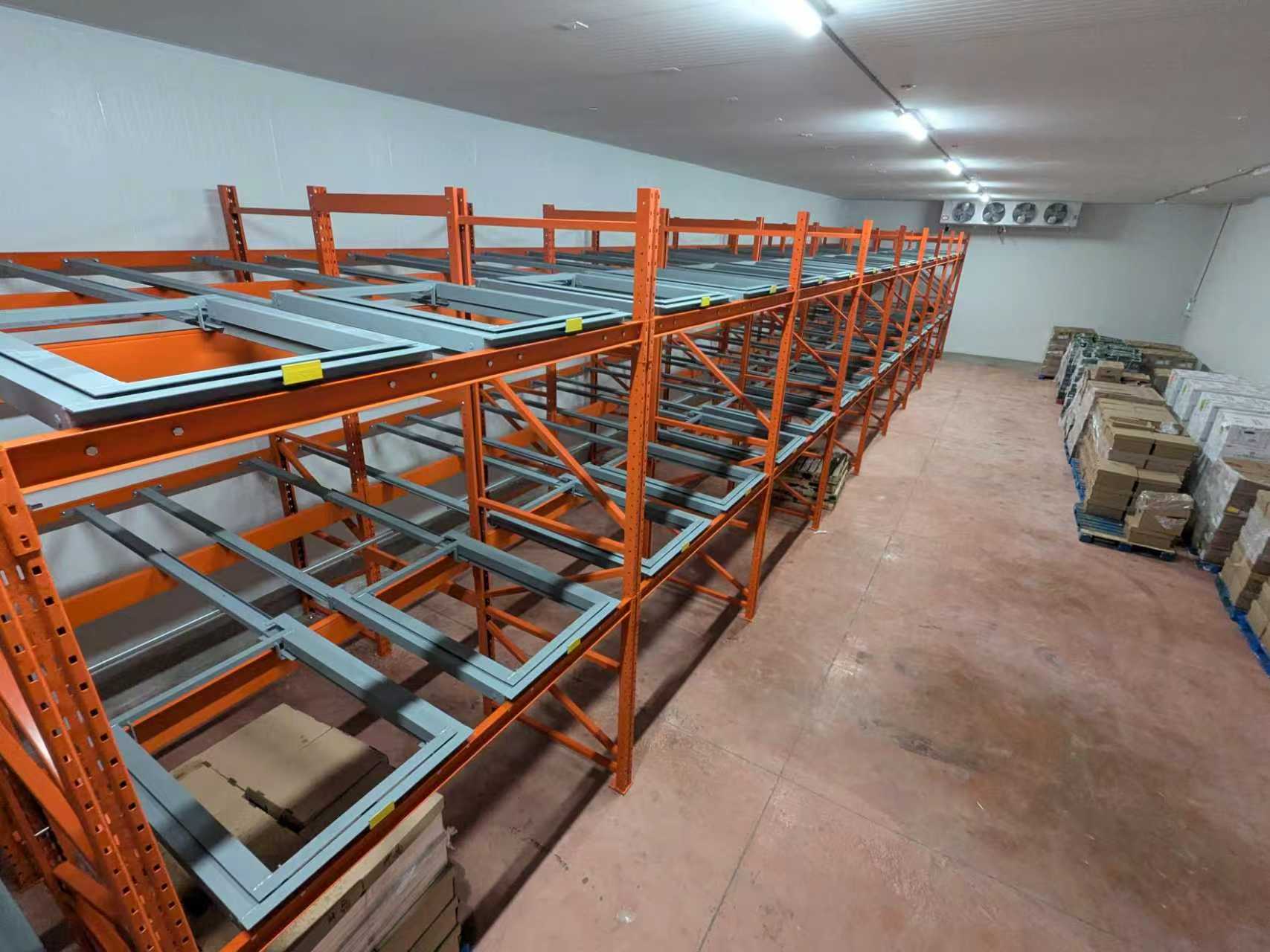

Push-back racking systems are primarily used for items requiring constant temperature storage, such as food and pharmaceuticals, in low-temperature storage environments. Their core function is to automatically sort goods through a gravity chute design, and, in conjunction with automated equipment, improve storage and retrieval efficiency. They are suitable for applications such as cold storage that require dense storage and high efficiency.
1. Food Processing: Suitable for bulk storage of frozen foods or quick-frozen food ingredients. Gravity chute design enables first-in, last-out storage, meeting shelf life management requirements.
2. Pharmaceutical Storage: Suitable for storing low-temperature pharmaceuticals or medical devices, utilizing the low temperature environment to slow product decay. Gravity chute design allows for dense storage and minimizes space waste.
3. Chemical Raw Material Storage: Suitable for temperature-sensitive chemical raw materials. A constant temperature environment ensures raw material quality, while push-back racking enables efficient storage and retrieval.
Push-back racking primarily consists of the following components:
Main Structure
Core Components
Carrying Trolleys: Straddle the inclined track, carrying cargo and sliding in the direction of the track's inclination.
Limiting Grooves (Optional): Some designs use grooves to prevent the trolley from tilting or moving excessively.
Other Functional Components
Anti-Tipping Pads: Some structures feature vertical and horizontal sections spaced from the bottom of the track to enhance stability.
| Depth | 2-5 Pallet Spaces |
| Tilt | 5°-7° |
| Aisle Width | 3.5-4m |
| Load Capacity | 800-2000kg/Pit |
| Weight Limit | 3000KG/Pit |
Please contact us for details on push-back racking solutions
Poor accessibility: After storage, goods must be retrieved from the front, preventing first-in, first-out (FIFO) and unsuitable for time-sensitive applications.
Load Limitations: Unsuitable for storing heavy items, as the trolley design limits its maximum load capacity.
Structural Limitations: Requires specialized guide rails and inclined tracks, resulting in high installation and maintenance costs.
Push back racking use inclined rails and gravity to automatically slide goods.
Loading: A forklift places goods on the pallet cart. The inclined rails guide subsequent loading, pushing the existing goods toward the rear.
Removing: When removing goods from the lower end of the inclined rails, the remaining goods automatically slide toward the front due to gravity, creating a "first-in, last-out" storage and retrieval system.
1. Steel Cost: This accounts for over 50% of the total cost. Different materials (such as Q235B or Q355 steel) and thickness directly impact the price.
2. Processing and Installation: This includes costs for sheet metal fabrication, welding, and surface painting (such as electrostatic spraying). Processing difficulty and labor costs increase with shelf size.
3. Accessories and Transportation: This includes the cost of accessories like guide rails, bearings, and pallets, as well as the impact of transportation distance on the total price.
4. Specific cost calculations should be based on the solution design and materials used.
Push back racking is suitable for a variety of merchandise types, particularly the following:
For fast-moving consumer goods (FMCG), such as food, beverages, and daily necessities, rear-entry shelving ensures the latest products are always at the front of the shelf, satisfying consumers' demand for freshness. Furthermore, these goods typically have a high sales frequency, and the automatic replenishment function of rear-entry shelving reduces staff restocking times and improves work efficiency.
For products with a short shelf life, such as pastries and prepared foods, rear-entry shelving ensures that these products are sold promptly within their expiration date. By placing newly produced products at the front of the shelf, losses caused by expired products can be effectively avoided.
For products that require frequent display rotation, such as fashion apparel and digital products, rear-entry shelving provides a convenient display rotation method. Staff simply add new items to the back of the shelf, and the old items automatically slide to the front, enabling rapid display rotation.




 Wechat
Wechat
 Whatsapp
Whatsapp
